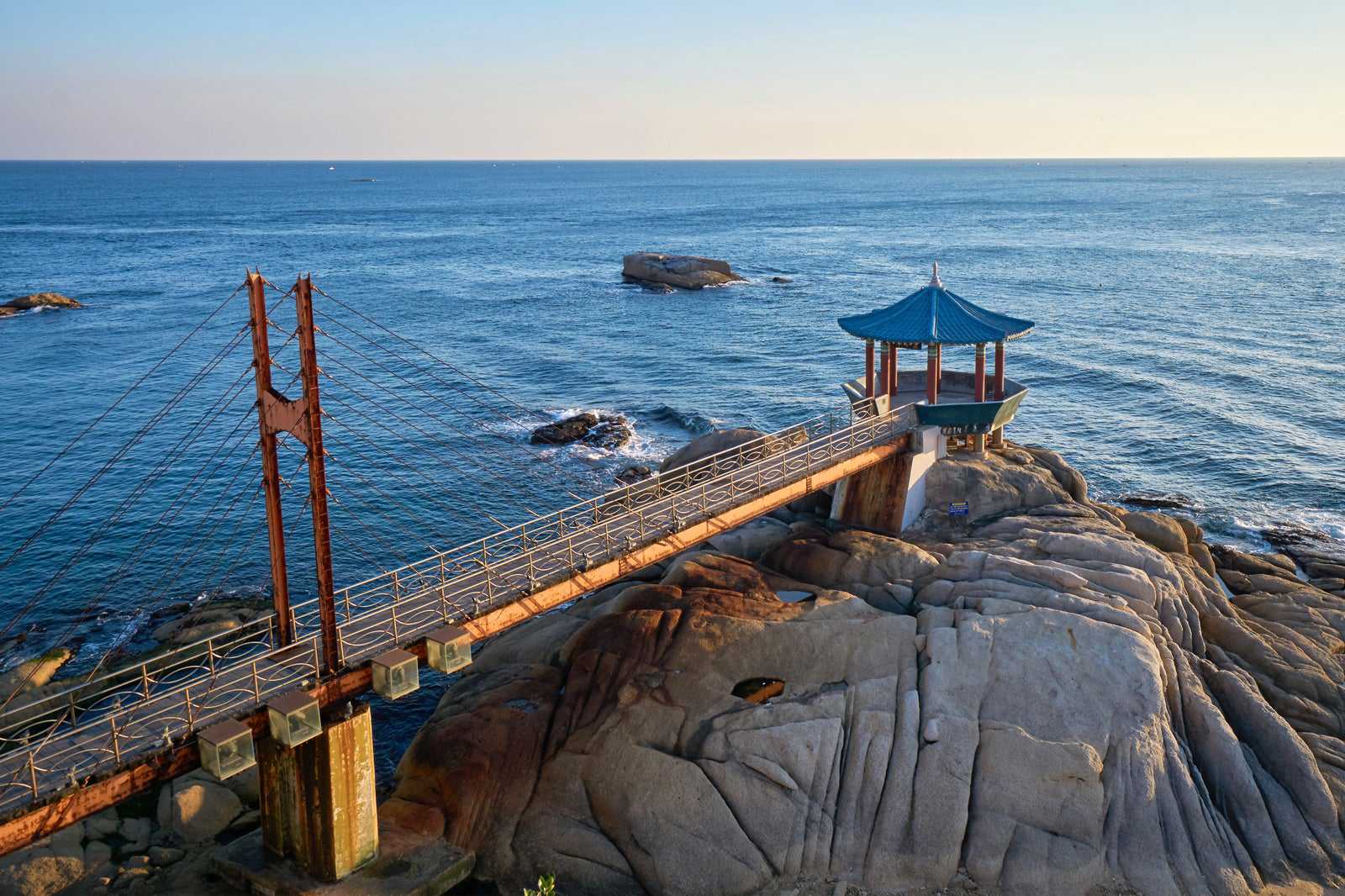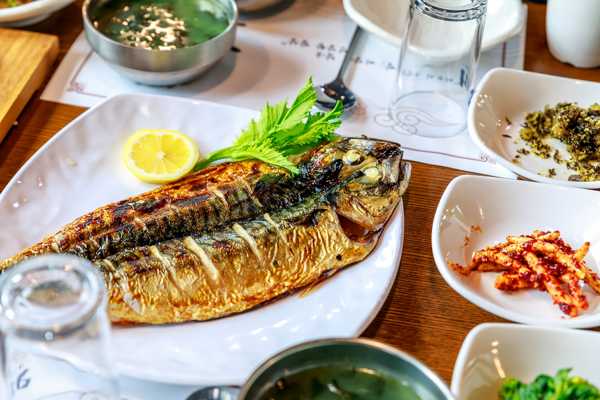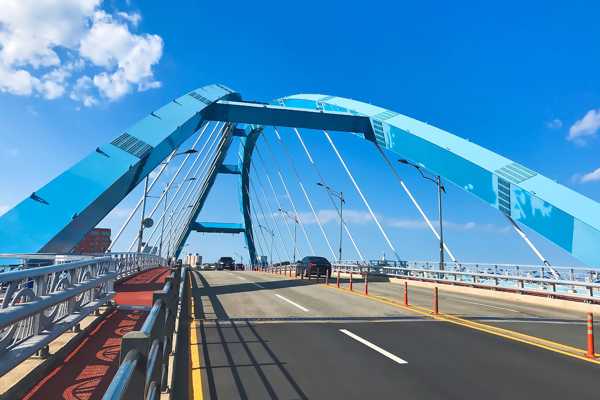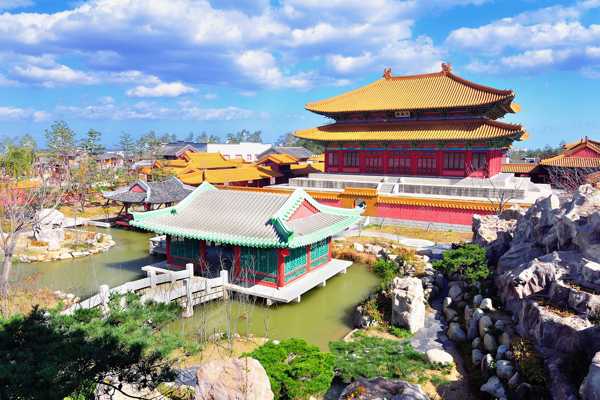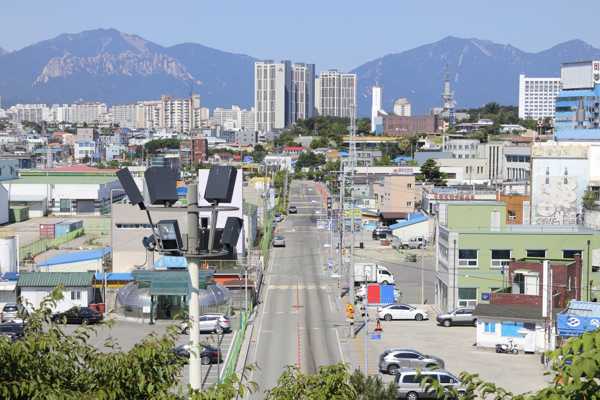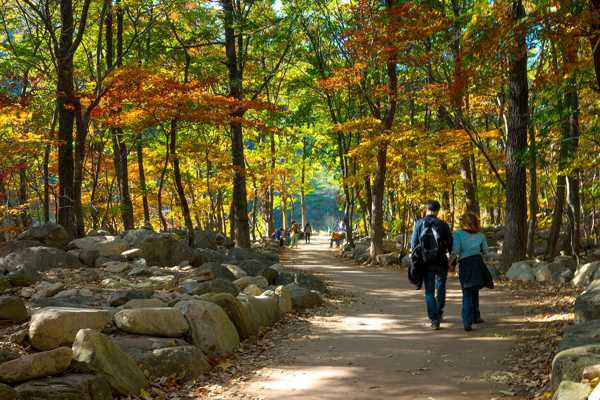Sokcho is much loved for its natural wonders, primarily in and around Seoraksan National Park, and along its hiking trails and gorgeous mountainous vistas. The shimmering deep blue waters of the East Sea draw big crowds in the summer. Stunning in every season, the slopes of Seoraksan Mountain burst into colour each autumn and shine with snow each winter.
In this list of local-favourite places in Sokcho, you’ll find some of the well-known attractions alongside a few hidden gems. Get ready to enjoy the stunning natural beauty and top-notch seafood available to you in this coastal city.
- 1
Sinheungsa Temple
Gorgeous temple grounds with a mountain backdrop
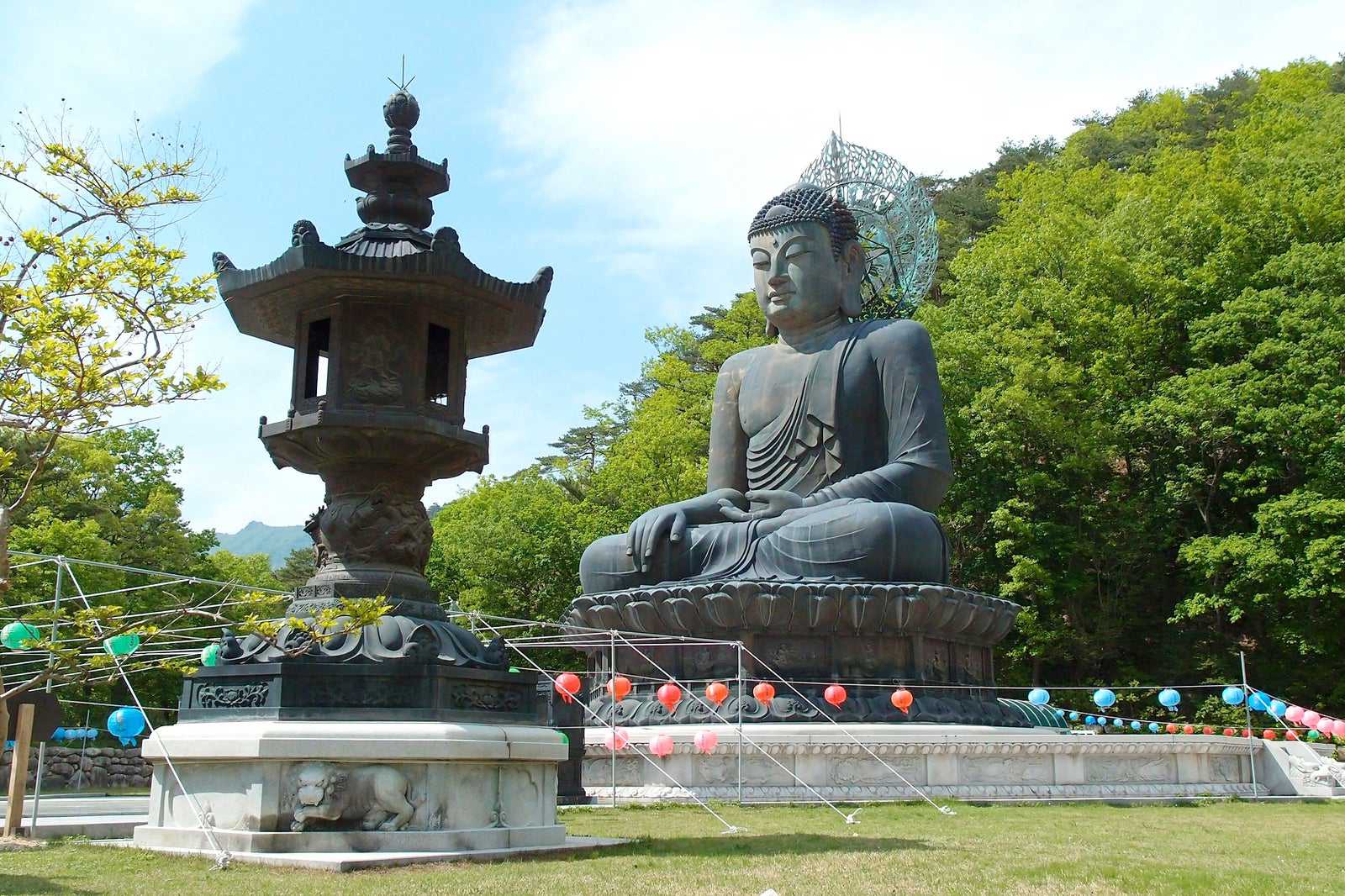
- Adventure
- History
- Photo
Sinheungsa Temple has stood at its perch atop Seoraksan Mountain overlooking the ocean for over 1,000 years. The temple is situated in a national park surrounded by mountain peaks with scenery that is particularly stunning in colourful autumn and snowy winter.
Passing through the temple gate, you’re greeted by a grand bronze Buddha which was the largest in Asia at the time of its casting. The temple itself is a masterpiece of intricate woodcarving and painting. On the grounds, you'll also find a millennia-old Buddhist temple bell called bumjong and a 3-storey stone pagoda at the Hyangseongsa Temple Site.
Map - 2
Ulsanbawi Rock
A steep hike up to majestic landscape views
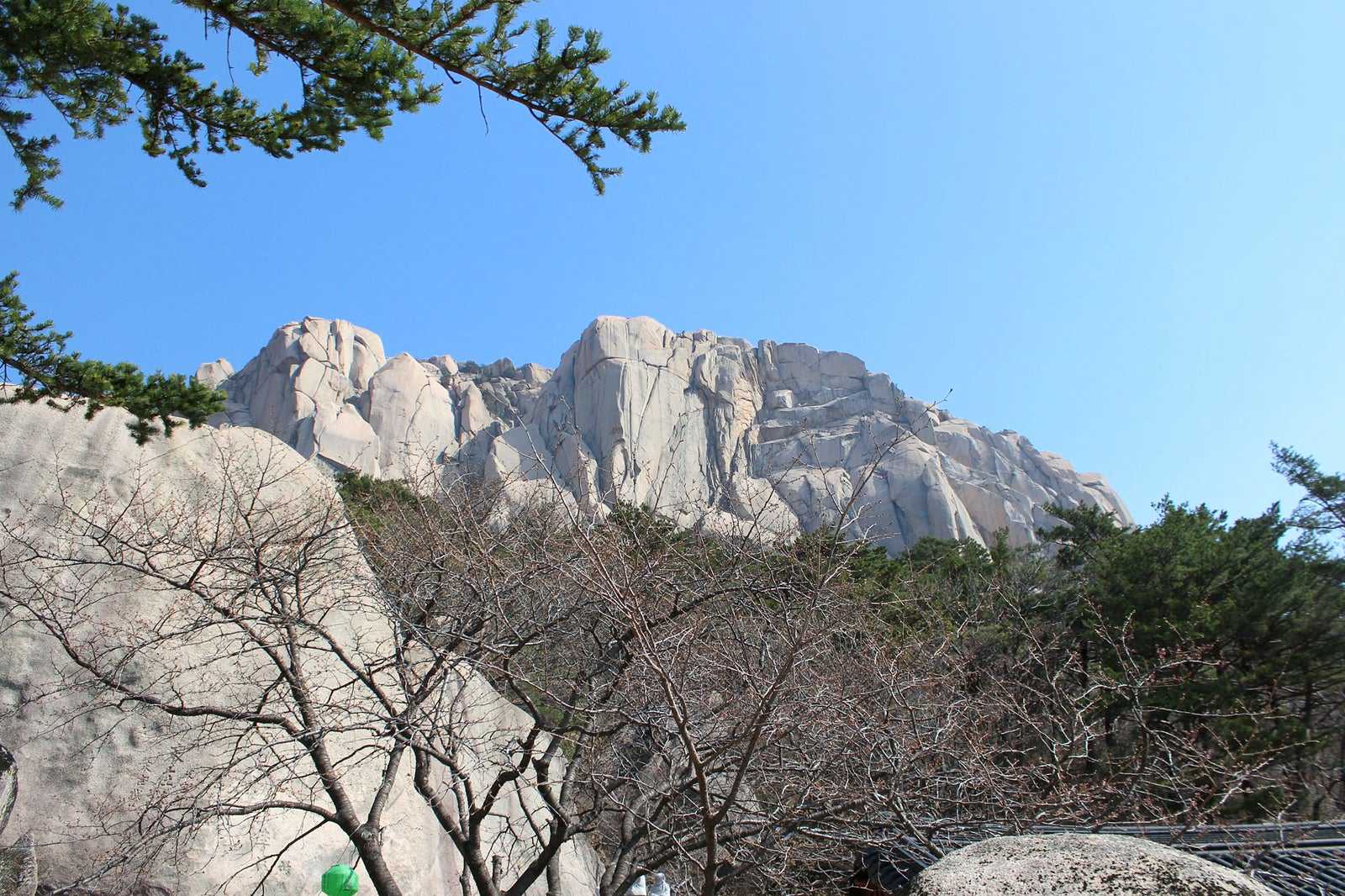
- Adventure
- Photo
Ulsanbawi Rock is South Korea's most famous rock, standing guard a short distance from Sokcho. The road to the summit is one of Seoraksan’s mountain trails, and it takes about 4 hours to get there and back. Start from Seorak-dong Small Park, passing Heundeulbawi along the way.
The trail, which gets steeper as it goes, will be challenging for inexperienced hikers but offers rewarding views. When you reach the summit at 873 metres above sea level, you’ll get spectacular views of Seoraksan Mountain and the East Sea. If you prefer a shorter hike, travel first to Heundeulbawi and start your trek from there.
Map - 3
Cheonbuldong Valley
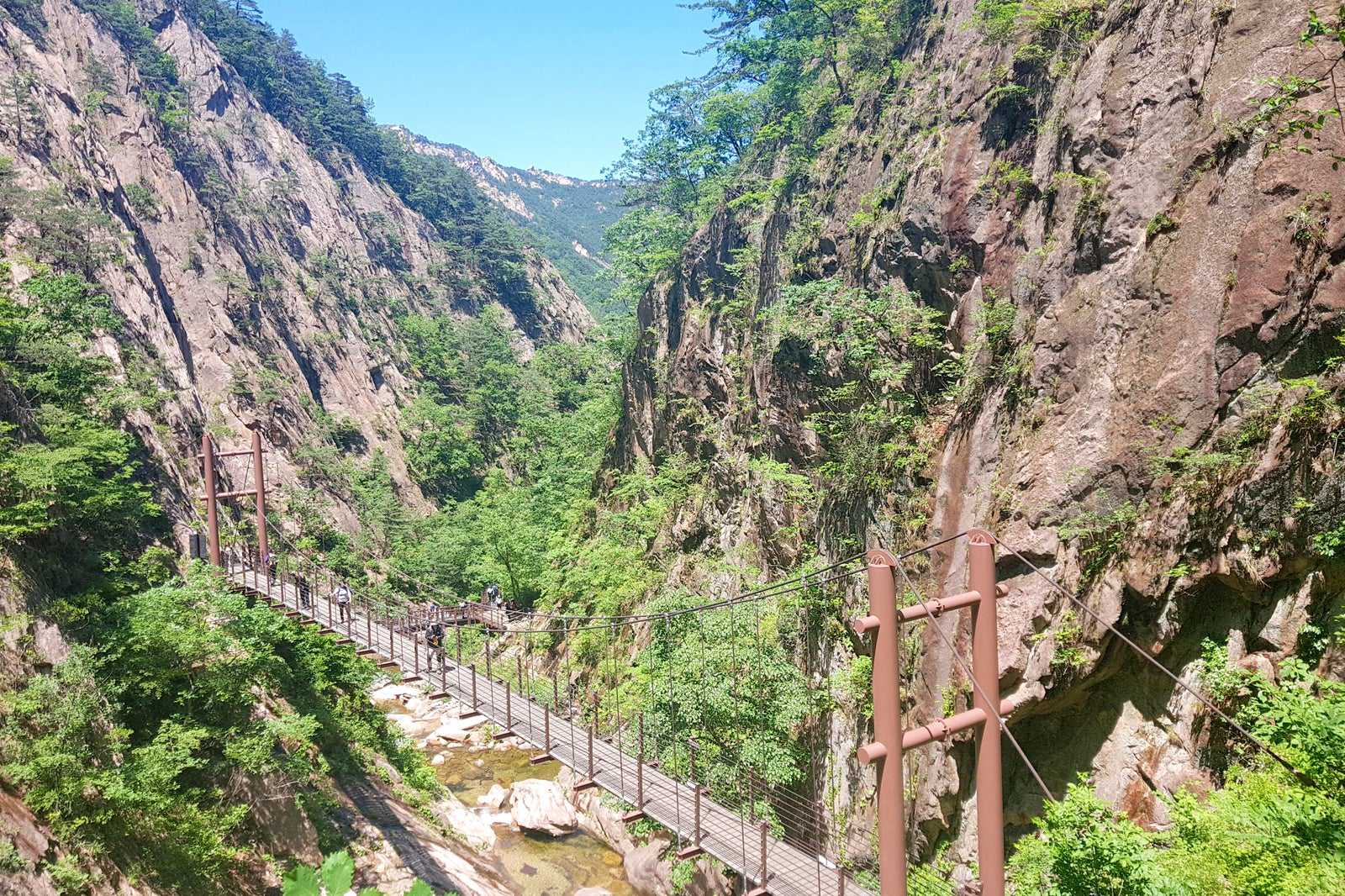
- Adventure
- Photo
The Cheonbuldong Valley trail starts at Biseondae and runs for 8 kilometres to the Daecheongbong Peak of Seoraksan. The name 'Cheonbuldong' comes from the shape of the rock formations on both sides of the valley, which are thought to look like a1,000 statues of the Buddha.
Cheonbuldong Valley is a popular destination for those in search of colourful autumn foliage. Along the trail are many scenic vistas, such as Waseondae, Biseondae, Guimyeonam, Oryeon Falls and Yangpok. The trip to Yangpok Shelter and back takes about 6 to 7 hours.
Mapphoto by rma2403 (CC BY-SA 3.0) modified
- 4
Biryong Waterfall
Bridges and mountainside waterfalls

- Adventure
- Photo
While the delicate stream of water in the Biryong Waterfall tumbling 16 metres down the rockside is a lovely sight to see, the trail would be worth hiking even without it. Located within Seoraksan National Park, Biryong is the second of 3 waterfalls along the trail. The path is not too challenging, with rest areas along the way, and is the kind of hike you want to pack a picnic for and just enjoy the scenery.
The hike to Biryong Waterfall and back takes around 3 hours. If you have the energy to take on the near-vertical additional kilometre leading to the third waterfall, the views from the observation deck are well worth it.
Map - 5
Seoraksan Cable Car to Gwongeumseong Fortress
This popular route offers some of the best views in the region
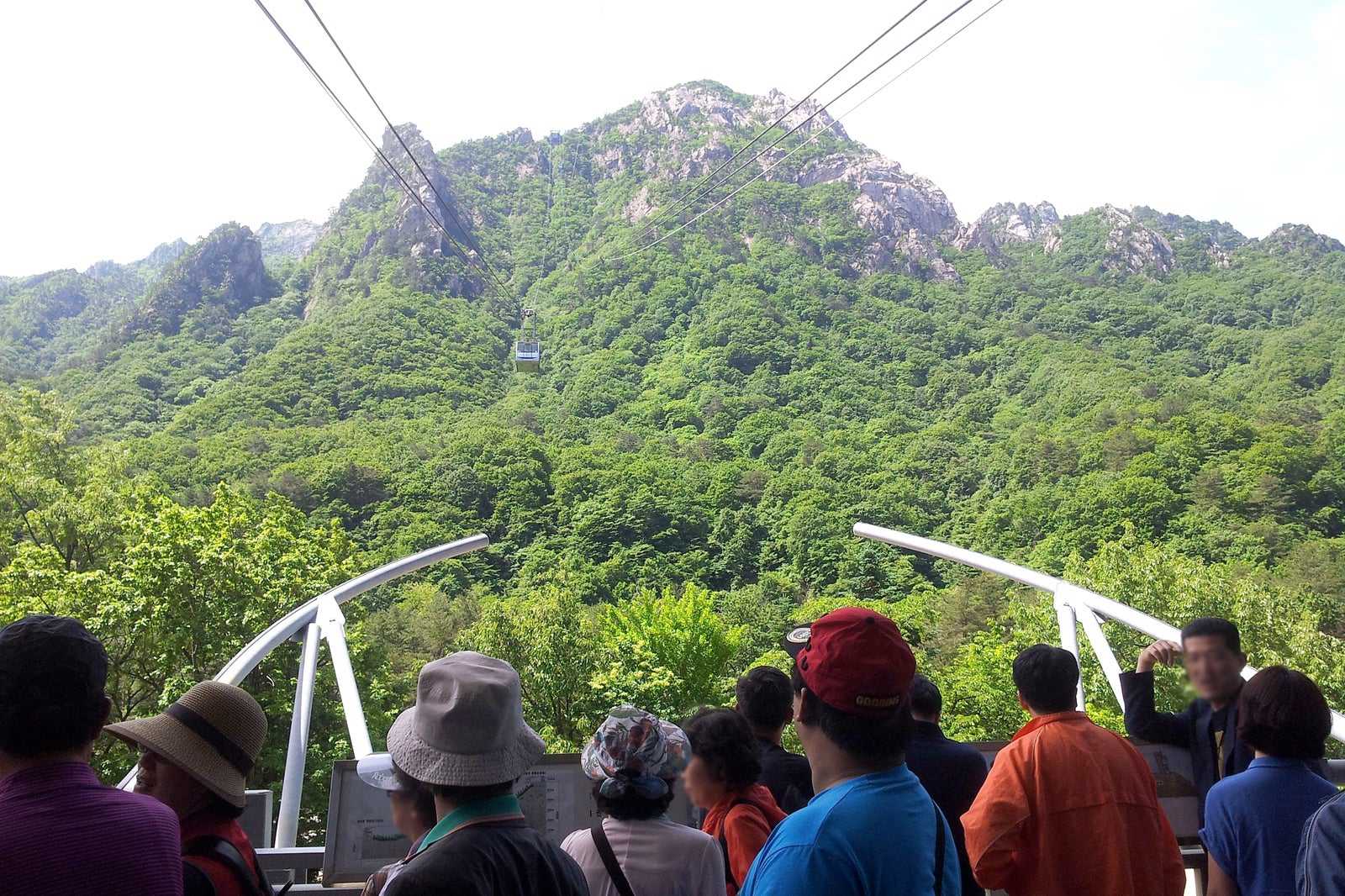
- Adventure
- Families
- Photo
For those who want the mountain views without the strenuous climb, a cable car offers the easiest route up Seoraksan. It runs from Seoraksan Small Park to Gwongeumsong Fortress, which is 700 metres above sea level. This is an exceptionally popular spot for local tourism, and during peak season it tends to get crowded, so avoid weekends and expect some waiting time to board the car.
From the cable car station at the top, it’s a 15-minute walk to Gwongeumsong Fortress. The fortress itself is long gone, but the site offers an amazing position to observe the surrounding scenery: Ulsanwabi Rock, Towangseong Falls and the East Sea all come into view.
Location: 1137, Seoraksan-ro, Sokcho-si, Gangwon-do, South Korea
Open: Daily from 8 am to 5.30 pm
Phone: +82 (0)33-636-4300
Map - 6
Sokcho Beach
Summertime memories at the beach

- Couples
- Families
One of the country’s most popular stretches of coastline, Sokcho Beach is famous for its fine sand and clean, clear water. Looking out from the shore, Jodo Island and the jagged peaks of Seoraksan Mountain break the horizon. The beach is a summertime dream, with carnival games, a Ferris wheel and fireworks lighting up the night sky.
The beach is within walking distance from the Sokcho bus terminal and is well-equipped with facilities and restaurants. Proximity to amenities plus shallow waters for swimming make it a favourite spot for local families.
Map - 7
Abai Village
For seafood and North Korean dishes
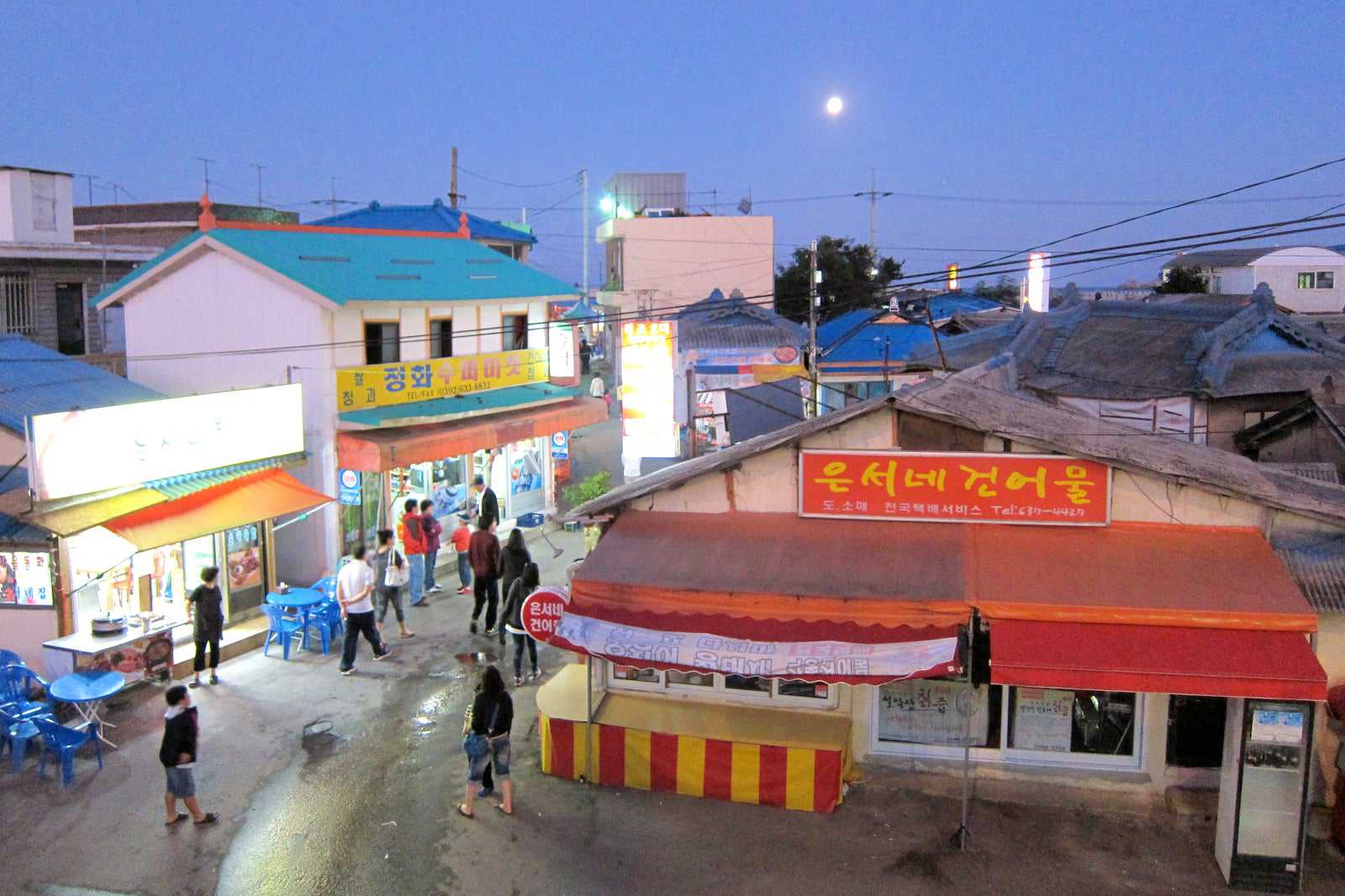
- Food
- History
Abai Village is a small settlement of North Korean refugees in Sokcho, popular with visitors to the city for its unique history and cuisine. One attraction of the village is the means of reaching it, an unusual man-powered boat called a gaetbae. There’s no driver of the boat: travellers power it themselves.
The main thing to do here is eat. The residents set up stalls serving North Korean dishes in a lunchtime marketplace, and restaurants specialise in stuffed squid, fish and snow crab. A trail of murals painted on the walls of homes and businesses throughout the village tells the heart-breaking story of the refugees and the lives they left behind.
Mapphoto by adam nicholson (CC BY 2.0) modified
- 8
Yeonggeumjeong Pavilion
A place to catch the sunrise over the sea

- Couples
- Photo
The Yeonggeumjeong Pavillion stands on a rocky outcrop off the coast of Dongmyeong-dong. Loved by locals for its serene atmosphere, the pavilion offers panoramic views of the ocean and the coastline. This spot is particularly romantic at sunrise and on moonlit evenings.
Each night the ornate red pavilion and the bridge leading to it are illuminated. While you may see a few other visitors here, it’s generally a nice spot to have a quiet moment by yourself or with a loved one.
Location: 43 Yeonggeumjeong-ro, Dongmyeong-dong, Sokcho-si, Gangwon-do, South Korea
Map - 9
Cheoksan Hot Spring Zone
Rest for the body and mind
- Couples
The Cheoksan Hot Spring Zone is an area in the east of Sokcho where locals flock to soak in natural hot springs. The spring water, rich in sodium and sulphur, averages a piping hot 50°C and is purported to be beneficial for indigestion, neuralgia and beauty. Located just next to Seoraksan Mountain, this is an ideal place to relax after a morning hike.
The area offers open-air baths, a spa and even a free-to-enter footbath park with hot and cool water baths lined with pebbles to massage tired soles. Visiting in winter, bathers will have a view of the snowy mountain peak from their soaking spot.
Map
